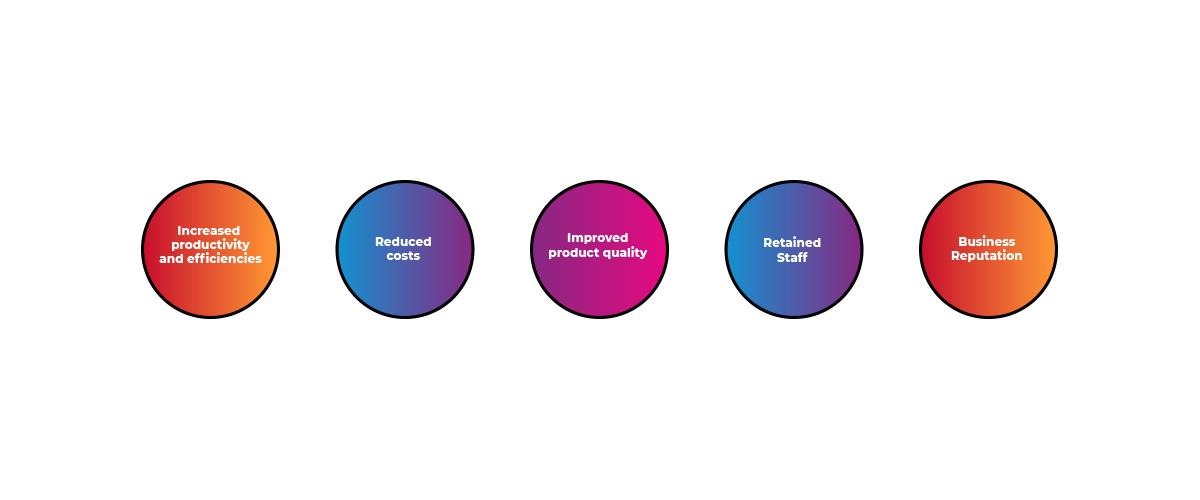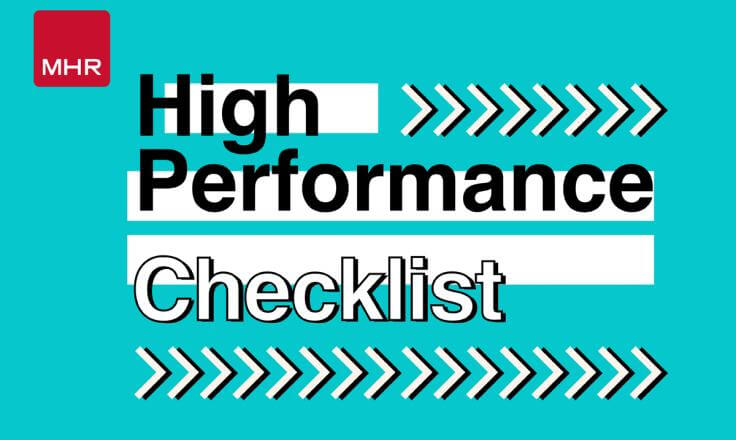What is HR learning?
HR learning is also known as learning and development (L&D). It’s a constant process of pushing the professional development of your employees and giving them the tools they need to direct their career paths.
It also involves spotting skill gaps within your business and figuring out the best ways to make those skills available without necessarily hiring an entirely new employee.
Some learning focuses on upskilling employees so they can perform their jobs better. Other kinds of learning will help employees develop new skills that can prepare them for other roles- which makes it particularly vital for anyone looking to enter management. Employees are particularly keen to develop soft skills so they can support their colleagues better.
Even moving away from career development, people like to learn. Offering opportunities for them to do so helps keep them engaged. Likewise, some employees may not be looking for a new or more advanced role, but they may want to be able to coach or mentor other employees. Training will help them with this.
This guide will help you understand the benefits of learning and development to employees, how HR is responsible for training, and what employee training is required by law in the UK.
We'll also look at the developing field and benefits of e-learning for employees.
What is employee training?
Employee training is a term that covers any programs that will help an employee learn a specific set of skills. As a rule, employee training tends to be role specific, but you can increase it's scope depending on your organisation's needs.
What is employee development?
If employee training refers to the specific programs you offer, employee development is a more expansive concept that focuses on how an employee will grow and develop within your company.
Employee development is critical to fostering a strong sense of employee engagement, and it is crucial for talent retention. Studies indicate that a lack of development opportunities are a major factor in employees choosing to quit.
What are the benefits of employee training and development?
Lynn Holdsworth, Head of the MHR Academy says, "Involving HR in training and development leads to a range of benefits that can be easily quantified. Whether you're looking to avoid skill gaps, save on recruitment, increase productivity or make your employees feel more appreciated, offering more training is a fantastic perk for you and your employees."
Studies indicate that businesses with a robust approach to employee training and development do a lot better than those that don't.
With 74% of employees feeling that they aren't given the development opportunities to reach their full potential at work, coming up with a robust strategy will make you a more attractive place to work.
What are the benefits of learning and development for employees?

Increase engagement
Engaged employees want to develop their skills and careers, and likewise, employees who feel stuck in their current position are less likely to be engaged. By offering development opportunities, you can help employees feel more at ease in their roles.
Increased skillsets
Training can give your employees access to new skillsets they may not have considered before. Workplace training is particularly good at unlocking new soft skills . This can make navigating the day to day of a workplace a lot smoother and give them more tools to deal with problems.
Motivation
A demotivated employee is a dangerous employee, as they can discourage other employees around them. When training is easy to access and appealing to go through, you’ll be able to give them bursts of motivation.
Confidence to achieve career goals
As mentioned above, employees who can’t see a way to advance their career goals will become restless, and potentially start looking elsewhere for work. Training offers them a way to stay on top of these goals.
What are the benefits of training for employers?

Those employee benefits will lead to a lot of great perks for your business. Here are just some of the highlights.
Increased productivity and efficiencies
Well-trained employees know how to handle their day-to-day tasks without a fuss and can even find practical ways to be more efficient- often without prompting. This can help your team outperform the competition.
Reduce costs
When you have a robust training plan you’re much less likely to need to bring in new hires to plug gaps. With recruitment costing as much as £6,125, finding ways to reduce the need for new hires is a great way to save.
Improved product quality
Perhaps the simplest benefit to offering training is that well-trained employees simply perform better. You’ll reduce the risk of silly errors and maximise the quality of any products you offer, as we.
Retained Staff
If an employee feels like they’re hitting a dead-end, they’ll be much more likely to seek alternative employment. Training helps them feel appreciated and improves their job satisfaction. The training and development opportunities you offer could be the key to a drastically improved retention rate.
Business Reputation
Trained employees provide much better service, so you’ll see a significant boost to your reputation with customers. However, you’ll also see your reputation as an employer grow, as you’ll demonstrate your commitment to helping employees develop their careers. That makes hiring in the future a lot simpler.
What employee training is required by law in the UK?
You are under no legal obligation to provide development opportunities to your employees (although for the reasons stated above it’s well worth it), but there is some specific training that you are required to offer.
In addition to covering your legal obligations, a unified approach to this mandatory training can help boost employee confidence and help smooth out your onboarding process.
Health and safety
In 2021/2022, there were 123 fatal injuries at work in the UK. Likewise, there are 1.8 million people who report suffering from a work-related illness, and 36.8 million working days lost. Ensuring safety in the workplace means you’ll have happier employees, but it will also save you a lot of money in the long term.
The Health and Safety at Work etc. Act (HSWA) 1974 requires every employer to provide information, training and supervision to ensure the health and safety of both employees and those affected by what they’re doing ‘as far as is reasonably practicable.’
A workplace with a warehouse or with dangerous chemicals on site will have different health and safety needs compared to an office, so you’ll need to carefully consider what is required.
This needs to be paid for by the employer and organised during working hours.
GDPR
UK companies that do business in the EU need to comply with GDPR to avoid racking up hefty fines (around £18 million, or 4% of your global turnover). Ensuring that your employees follow best practice when it comes to data protection will protect you from this, as well.
However, there are no formal GDPR certifications, so you need to design the training yourself. However, the ICO does provide some guidance as to what your training should cover.
Employee rights
While you’re not obligated to have a full-fledged learning and development department, companies with over 250 employees must seriously consider any requests from an employee to take time off to train, provided such training would benefit the company.
However, if you want to grow your business, foster a culture of learning and development, and boost employee engagement, then offering more than these statutory requirements is ideal.
What are the benefits of e-learning for employees and businesses?
There are numerous benefits to e-learning for both employees and businesses. As a rule, they’re a lot less time-consuming to plan, and can be picked up when convenient to the employee. This makes it ideal for compliance training.
Cost-effective
Training costs can quickly rack up, as you need to buy and print materials, reach out to on-site instructors and even cover the costs of a venue in certain cases. E-learning can be completed from anywhere on a wide range of devices, and if you need to make any changes it can be done easily through your LMS, without requiring you to print out fresh material.
Flexible
E-learning is available anywhere, which means it’s a lot more accessible. This makes it a great choice for organisations with a hybrid working environment, but it also makes it simple to deliver learning to individual employees with different needs. For example, an employee who is hard of hearing will appreciate having interactive written content available.
It’s also a lot easier to provide different kinds of e-learning to support different styles of learner. If you have some employees who are visual learners, and others who are auditory, you can adapt for this.
Interactive
Studies indicate that most people only remember about 10% of what they hear. Face-to-face learning often involves being lectured to which can lead to learners tuning out, but e-learning can more easily incorporate interactive elements that are truly engaging.
Efficient
With this improved flexibility and cost-effectiveness, learners tend to complete e-learning modules a lot more quickly compared to in-person training. This gives a massive boost to productivity and performance, as everyone can get the mandatory training completed as fast as possible.
Standardised Format
An in-person training session is heavily reliant on who is delivering it, but e-learning materials can be delivered consistently every time. This makes it a lot easier to measure their impact as well as to adjust based on feedback.
How to build a successful training and development strategy
The most successful training and development strategy will offer a variety of options for learners. Learning is incredibly personal, so you can’t take a one size fits all approach. What works well for one employee or company won’t always be transferable to another. However, there are some principles that can guide you through this process.
Set clear objectives
Identifying your employee and training needs before you design your programs will ensure you hitting all the targets you need.
Get feedback from employees
If your employees aren’t finding your training engaging or useful, then it’s time to head back to the drawing board. Employees can also offer insight into what training they’ll find useful.
Use data
Performance reviews, exit interviews and customer surveys canal provide insight into how your training is doing. Look for patterns in the data.
Tools such as People First can help spot areas your employees want to develop and let them personally flag up areas they’d like to improve on.
Likewise, MHR Learning can help give your training programs a boost, automating a lot of the tedious management tasks associated with delivering a learning experience. It also centralises all your training into one accessible platform.
Enhancing your learning tools and strategy with MHR
In addition to our LMS, MHR offers a large range of tools that can help support you in delivering a robust learning strategy. From HR platforms to suit the unique needs of your industry, to simplified approaches to onboarding, we’re your ideal partner for taking your learning strategy up a notch and turning your talent into top performers.




































































